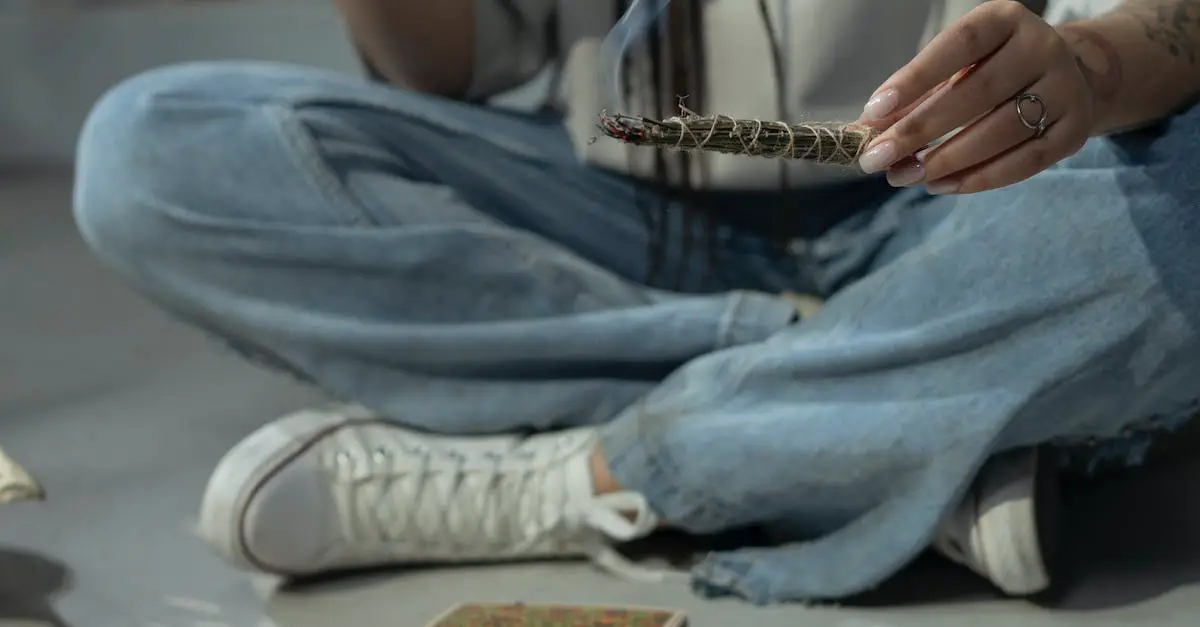Are you looking to learn more about smudging rituals?
Many cultures have used this spiritual practice for centuries to cleanse and purify their environment. Not only is smudging used to drive out negative energy but it also can be used to bring inner peace and grounding.
This article will teach you everything you need to know about smudging rituals. From the history and traditional uses to modern applications, you will fully understand this ancient and powerful practice.
Plus, in the interest of full disclosure, it is even smoky.
So grab a fan, light your sage, and get ready to learn about the ancient art of smudging.
Before we begin – when dealing with a flammable object, always follow best practices, or you risk injuring yourself or others. Smudge safe!
Materials Used in Smudging Rituals
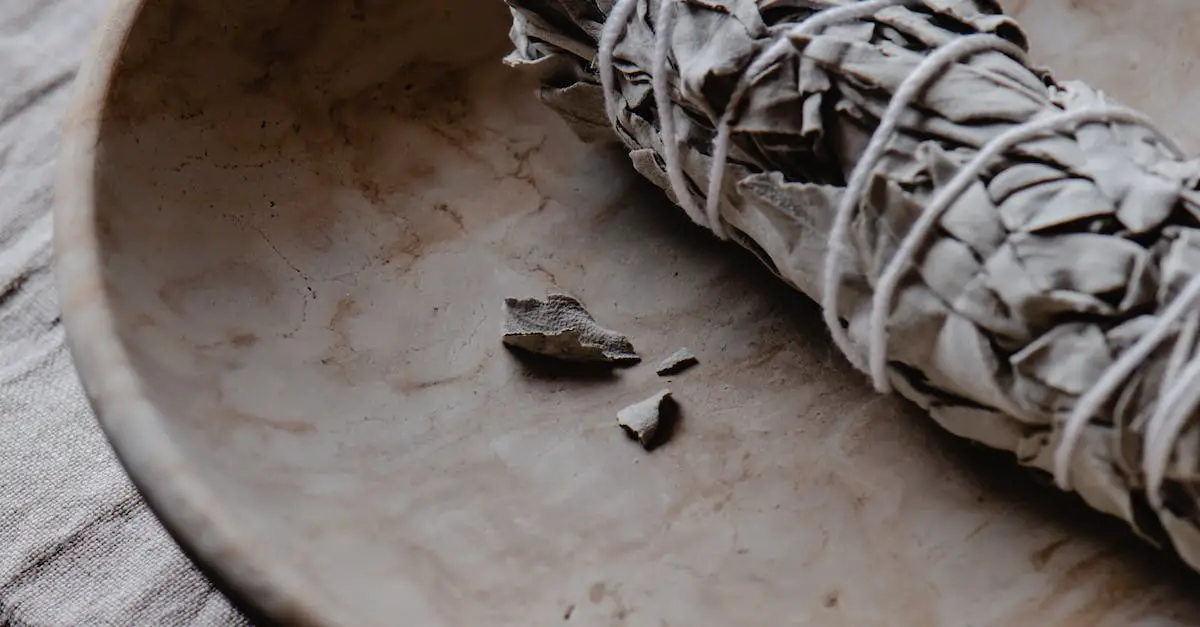
Are you ready to take your spiritual well-being to the next level? If you ignore the recommendations of seasoned practitioners, you may be in a bit of a sticky situation. Learn the basics of smudging rituals! By preparing the materials you need, you’ll be sure to make a sacred connection.
Smudging rituals involve the burning of sacred herbs. First, it’s important to understand what materials you need. To begin, you’ll need to collect various plants and herbs. White sage and juniper are two popular choices. In some circles, smudging rituals include the burning of cedar and sweetgrass.
-

Celestial Soul Eco-Friendly Tote Bag
$18.50 Select options This product has multiple variants. The options may be chosen on the product page -

Celestial Soul Women’s T-Shirt
$20.00 – $21.50 Select options This product has multiple variants. The options may be chosen on the product page
If it’s your first time, you may consider adding lavender, rosemary, and thyme for extra good vibes and healing. Once your herbs are gathered, gather your tools. In addition to matches, you’ll need to use a fire-safe plate and an eagle feather. A seashell or an abalone shell can be added for the traditional types.
When it comes to smudging, the variety of herbs you choose goes beyond just being decorative. To practice the ritual correctly, you may need to research the traditional meaning of each plant and its metaphysical properties.
Like any sacred practice, smudging rituals should be done with respect and reverence. To ensure that the atmosphere is conducive to spiritual healing, gather the necessary materials and allow yourself some time.
Whether you’re purifying a space, preparing for meditation, or completing a healing ceremony, smudging rituals are easy to connect with the spiritual realm. So take some time to gather the plants, herbs, and necessary tools. Then, allow yourself to become attuned to the healing energy of the smudge.
Historic and Cultural Background of Smudging
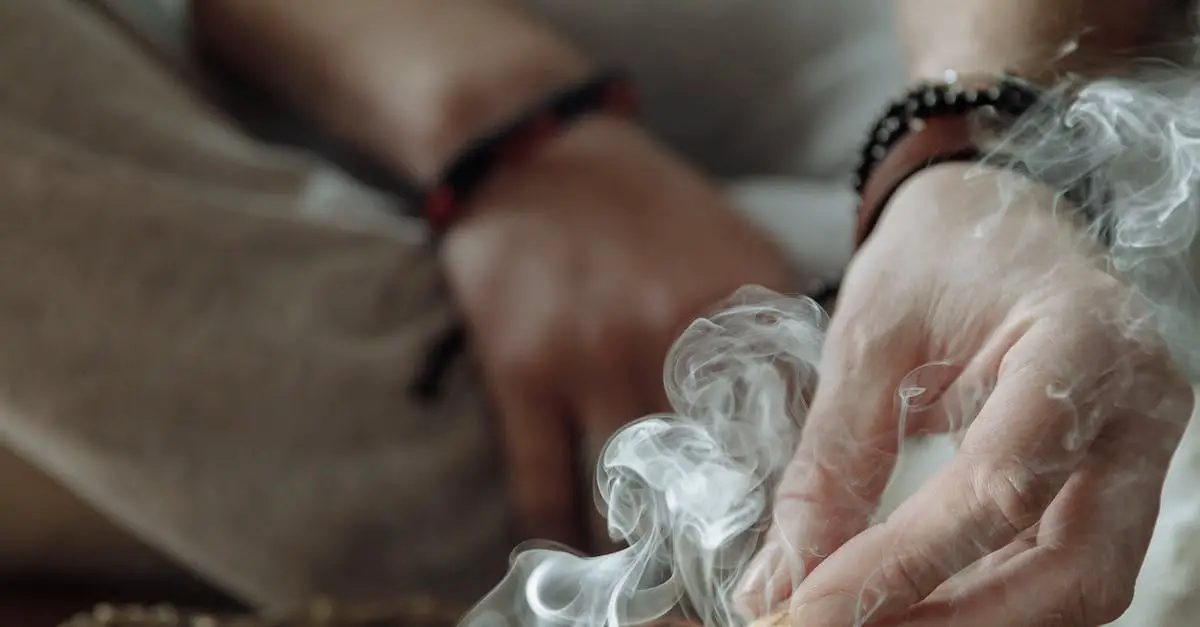
Have you ever heard of Smudging Rituals and wondered what all the fuss is about? Smudging is an ancient, traditional ceremony that has been used by many different cultures for centuries. It has a rich history and varied cultural significance.
To understand what Smudging Rituals are all about, it’s important to get to know their historical and cultural backgrounds.
It’s believed that the practice of “Smudging” was first used by Native Americans more than 500 years ago. Smudging is a ceremonial practice of burning herbs and prayers, which then is released into the air and absorbed into the body. This allowed them to purify, heal, invoke visions, energize and remove curses from their lives.
The words “Smudging” actually comes from the Algonquin language, where the word “smut” is the term for sweetgrass. The ritual often involved burning the sweetgrass and letting the smoke rise up to the sky. This is said to bring peace and balance to a person’s mind and spirit.
Today, Smudging Rituals are becoming increasingly popular among people of many different cultures, not just Native Americans. Smudging has now become a way to cleanse and purify one’s energy field, remove negative thoughts, repel bad spirits, and heal emotional and physical wounds.
There have been many interpretations of Smudging Rituals over the years, but the basics remain the same. The practice of smudging typically starts with lighting a bundle of herbs, such as sage, cedar, and sweetgrass. The herbal bundle creeps around the house, or a person, prayers are spoken out, and the smoke is released into the environment.
The intent is to purify, cleanse, and bring in positive energy and vibrance. After the smudging, the air is said to smell different, as if all bad energy has been taken away and only good energy remains.
Smudging can be used to bring in positivity, spiritual cleansing and protection, or for honoring the ancestors.
Smudging for Cleansing and Protection
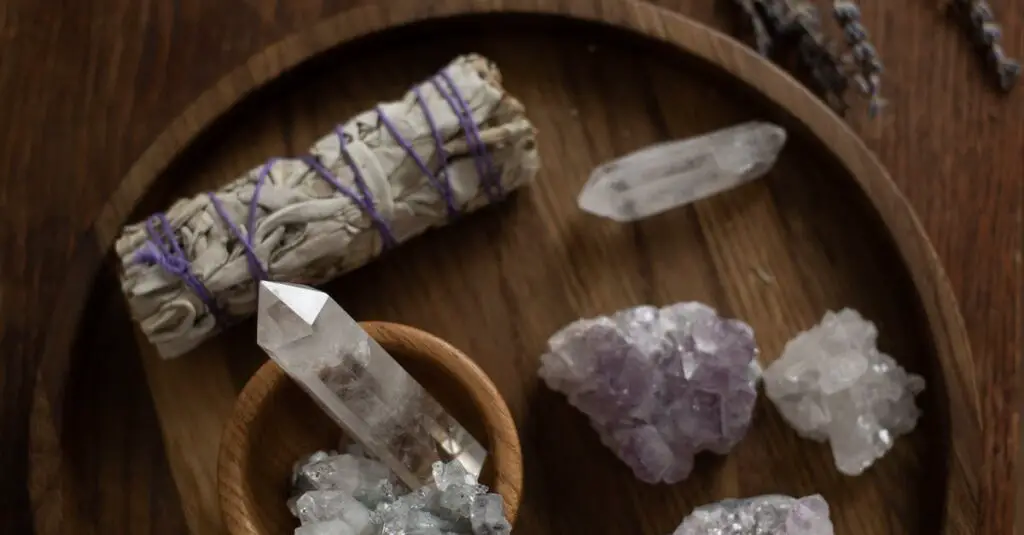
Smudging is an ancient practice that has been used to cleanse and protect the energy in a space. It’s a ritual that usually involves burning plant material and wafting the smoke around your home or office. While it’s been practiced by various cultures for thousands of years, it remains popular today as a way to cleanse and protect yourself and your environment.
For instance, have you ever walked into a room and felt a certain kind of energetic, oppressive mood? Whether you consciously knew it or not, smudging can help to clear away that heavy energy and create an environment that feels lighter and more inviting.
The most common plants used for smudging are sage, cedar, sweet grass, and tobacco. Each plant has its own special properties and benefits, and you can choose based on the energy you’d like to bring into your space. Sage and cedar are popular choices for cleansing and protection, while sweet grass and tobacco are great for releasing negative energy.
When you’re ready to smudge, all you need to do is light up your bundle of plants, allow it to smolder, and walk around the room, wafting the smoke. As you do this, imagine the smoke carrying away any stagnant, negative energy from your space. You can use a feather, fan the smoke around, or use your hands to help create the desired smokey effect.
Smudging can be a powerful ritual to purify, protect, and cleanse your environment – give it a try and see how it shifts the mood of your space.
The Importance of Setting Intentions

Setting an intention for your smudging rituals is the last, but certainly not least, important step in this healing process. Without fully committing and pouring your heart into the practice, it is hard to reap any benefits from smudging.
As silly as it may sound, it helps to speak out loud the positive intent of your smudging. Doing so helps set you in a positive state of mind by connecting the conscious and subconscious. As if you have already received the blessing that you are asking for. Saying it out loud gives it authority, setting the intention firmly in the present moment.
It is important to bear in mind that the intent of smudging is noble and focussed on the healing power of unconditional love. Think of the mantra ‘love and light.’ This mantra resonates in all corners of the world, reminding us of the power of love in our hearts and minds.
Feeling frustrated? Say it out loud. Smudge for renewal, for restoration, for clarity of thought. Feel that within.
When using this set intention, be sure to keep it broad and open ended. Do not focus on specifics in your smudging rituals, as such an attitude can come across as needy or desperate. Visualise happy and vibrant possibilities instead. Feel expansive with your intention and allow it to float in the air. The more open and expansive in adventure, the more receptive you will be to the unique blessings the universe may have in store for you.
And don’t forget, you are never too old to benefit from the ancient messages that smudging has to offer. Acknowledge the wisdom being shared with you and allow it to be part of your life story.
Steps to Perform a Smudging Ritual
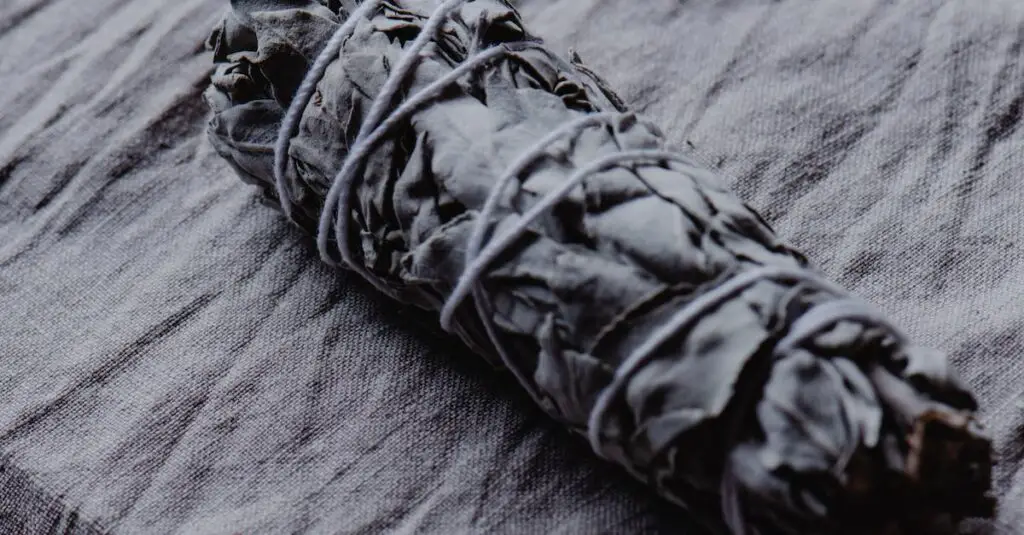
Are you ready to experience the powerful cleansing and rejuvenation of smudging rituals? Don’t just jump into it without doing your homework – below are the five steps you need to know to make sure the ritual is done properly and that the most benefit is gained from it.
- Gather the supplies you need for a smudging ritual – the most common ingredients are sage, sweetgrass, cedar, lavender, copal, and tobacco. You’ll also need a fire-safe container, such as an abalone shell, and a lighter or matches.
- Prepare your space by opening the windows, placing a bowl of water near it, and picking an appropriate soundtrack.
- Light the ingredients with an ember or match, but use only the ember. Be sure to extinguish the ember and continue the ritual properly.
- While smudging, make sure to use your intention and focus on the purpose of your ritual. You can walk around clockwise and chant the intention aloud or in your mind.
- When finished, extinguish the remaining smudge. Make sure to be mindful of the ashes and properly dispose of them. It’s important to close the ritual with a blessing or prayer and feel the freedom and joy of the ritual.
Smudging rituals can be complicated and intimidating, but with these five steps, anyone can perform their own smudging ritual with confidence. Happy smudging!
Closing a Smudging Ritual
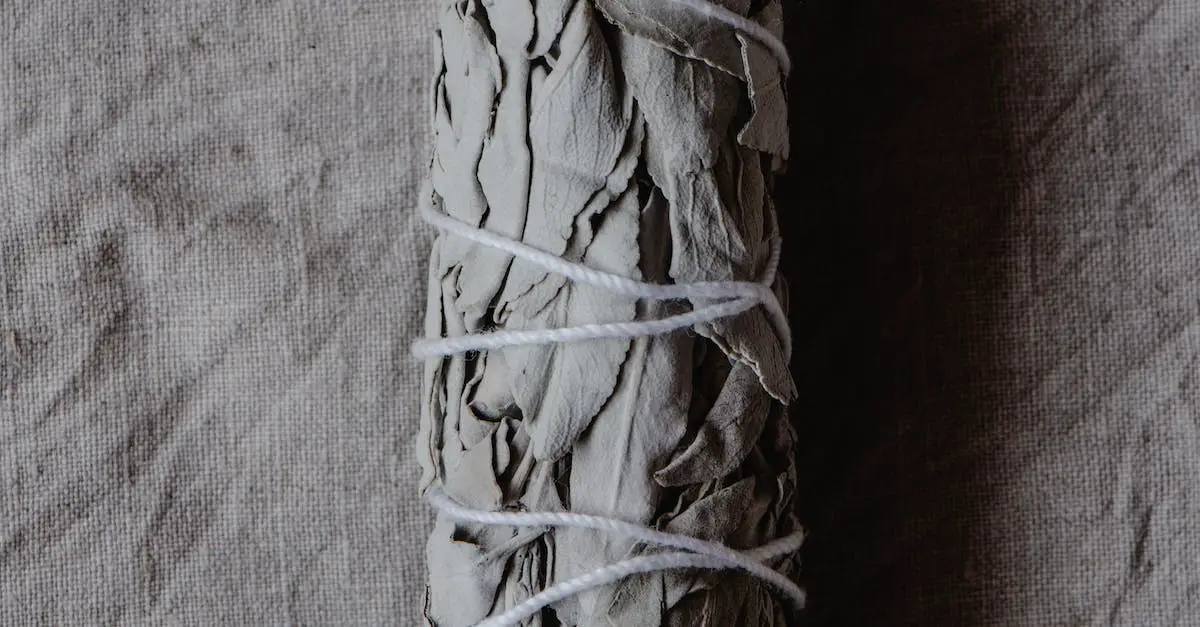
Once the smudging ritual has been completed and you feel like the smudging is complete, it is important to close the ritual properly. To do this, you will want to offer your gratitude to the spirits you have called upon and express your thanks for their assistance. This will help you to open up to your ritual and allow you to feel at peace as you end the spiritual practice.
First, start by expressing your appreciation. You may say something like, “Thank you for bringing this healing energy into this space.” Then, blow out the sage or cedar you had burning. After that, take some moments to reflect on what you have accomplished. You may feel an inner peace settling over you, as your heart and soul are grateful for the healing that has taken place.
Then, it is best to bid farewell to the spirits you have called upon. You may thank them and even send your love and gratitude. You may also offer a small prayer to the involved spirit guides or deities in order to thank them for their help.
Following this, you can close the circle by consecrating the energy and space once again. Place your palms together, and draw them apart in a sweeping gesture as you envision the energy and space returning to a clear state. This will help to clear the space of any unwelcome energies and put your ritual to rest.
Once you have closed the ritual, you can cleanse and clear your tools, such as the sage and cedar, so they are ready to be used for your next ritual.
At last, you can convey your gratitude for participating in the ritual and for being open to an enhanced state of connection with the spirit realm. Once this is completed, you can rest with ease knowing that you have properly concluded your smudging ritual.
Smudging Rituals of Different Cultures

There is no one-size-fits-all approach to smudging rituals. In fact, smudging rituals of different cultures vary widely in origin, technique, purpose, and significance.
One of the most well-known smudging ritual is the Native American Sage Smudge. This ritual involves burning specific herbs like sage, cedar, sweetgrass, tobacco and lavender and allowing the smoke to fill up the room. Its primary purpose is to purify and cleanse the space. Practitioners of this ritual often say the smoke carries away negative energy and spirits and brings in positive energy and blessings.
In the Hindu culture, smudging often involves the burning of incense sticks, aromatic oils, and medicinal herbs. This is a way of purifying, cleansing and honoring their temples, shrines and sacred places. The fragrance of the incense and herbs carries away the negative energy and attracts positive energy and blessings.
In Bali, smudging rituals involve the use of burning different kinds of local flowers, incense, and herbs. These are believed to carry away negative energy, cleanse the air, and bring in luck and fortune. During the ritual, baskets or cloths are often filled with oils and burning herbs, and then the smoke is wafted towards the altar, temple, or shrine.
European Christians also have their version of smudging. This began long ago, when certain herbs were used to cleanse and purify people’s homes. Thyme, frankincense, and myrrh are often burned in traditional Christian smudging rituals.
Smudging rituals are not exclusive to any one culture. Different cultures may have different methods of practicing smudging, but all these rituals have a few things in common: purification, cleansing and honor. No matter the culture, smudging rituals can be a powerful tool for transforming our atmosphere and bringing us positive energy.
Safety Precautions During Smudging Rituals
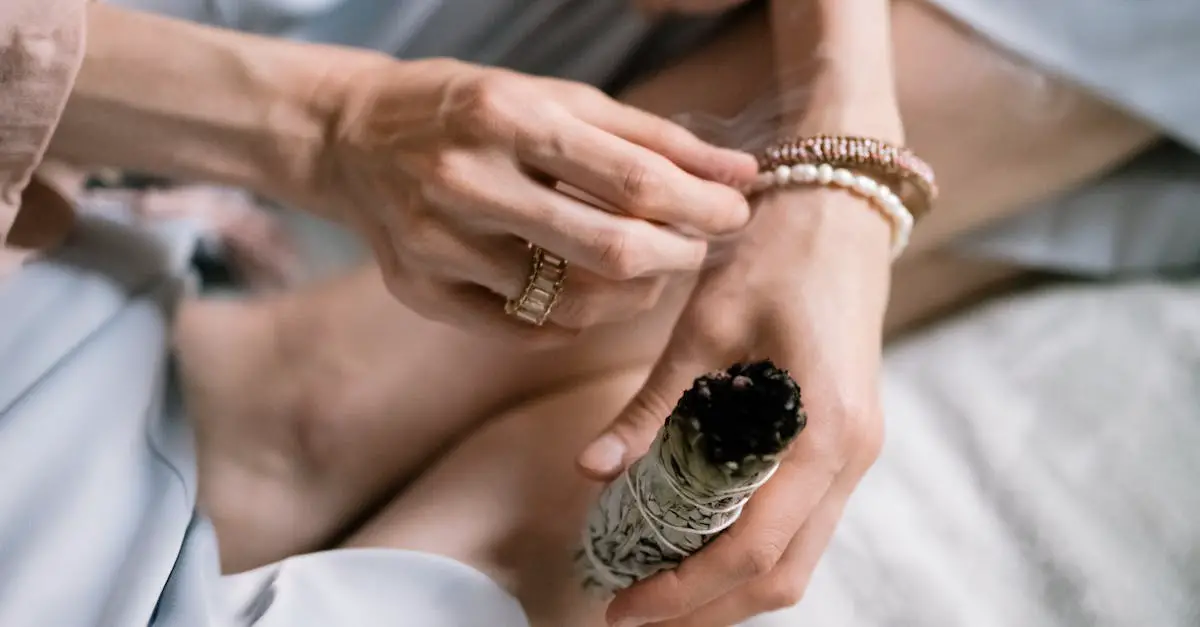
You may have heard the term “smudging” before, but what exactly is this spiritual cleansing ritual? It’s a way of allowing the smoke of certain herbs or woods to fill the air and cleanse a person, place, or item of perceived negative energy.
It’s believed to be an ancient practice, and can help cleanse, purify, and revitalize yourself, your home, or any object. But, before diving into the ritual itself, you want to make sure you keep safety in mind and follow some basic smudging safety tips.
When it comes to safety during smudging rituals, the main thing to keep in mind is having good ventilation. You don’t want the smoke to accumulate, since it can be irritating to the eyes, mucous membranes, and respiratory systems if there’s too much of it in a confined area.
Make sure there are plenty of openings and windows in the room you’re performing the ceremony or it could become like a sauna in there! You also want to use an abalone shell or clay bowl to catch the ash, as hot embers can ignite carpet, furniture, and other objects.
Also, take the time to properly prepare your materials beforehand. Make sure your herbs or woods are safe, fresh, and of the highest quality so that you don’t risk a mishap from contaminated materials.
Doing your research beforehand on the quality of your materials can save you from a potentially hazardous situation! Once you have the proper herbs or woods, you’ll want to store them away from flames or other combustible materials.
Smudging can also be very helpful in many aspects of life, from inviting positive energy into a new home to grounding yourself during meditation. But, it’s always best to practice caution and use common sense when performing any sort of spiritual ceremony.
Even if the ritual is something done out of spiritual or religious belief, you still need to be mindful of the physical aspects in order to ensure everything goes off without any issues. So, as long as you keep these basic safety tips in mind, smudging can be a wonderful addition to your spiritual practices.
Conclusion
Smudging rituals have been around since the dawn of time, with the ancient practice of burning herbs or incense to clear energy and protect the home still being used today. With its healing and calming properties, smudging is the perfect way to pause, center yourself, and give your energetic environment a much-needed reset.
Whether it’s sweetgrass, white sage, juniper, or cedar, incorporating smudging rituals into your daily life can do wonders for your mental and physical well-being.
It’s the perfect way to align your environment with the greater purpose of renewal and connectedness – yes, you can actually overcome homesickness in mysterious ways!
So why wait? Join the world in awakening your senses and spirits – get smudging today!
Reference:
3rogers, Carolee. “Smudging Rituals: What You Need To Know.” MyYogaOnline, 21 June 2017, www.myyogaonline.com/articles/spiritual-wellness/smudging-rituals-what-you-need-to-know
www.lorecentral.org/2018/10/smudging.html
www.native-languages.org/smudging.htm
https://www.everything-you-need-to-know.com/smudging-rituals.htm

